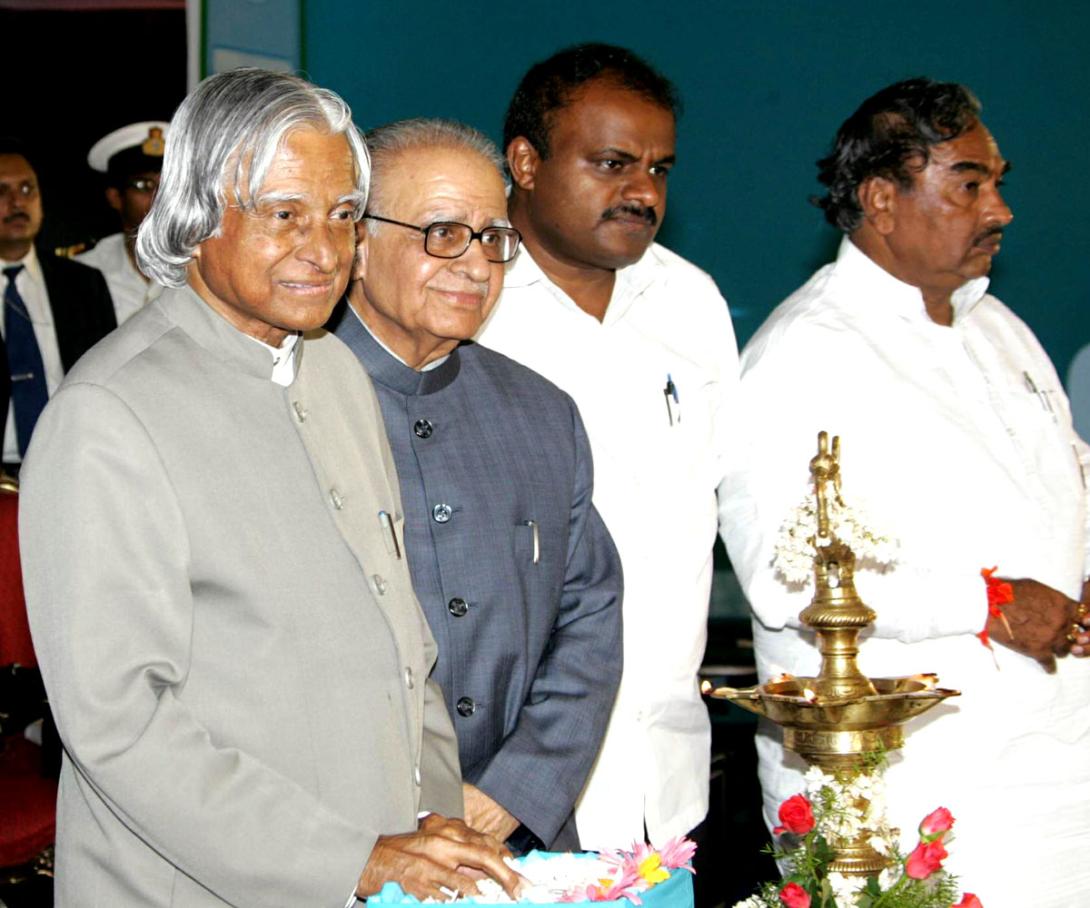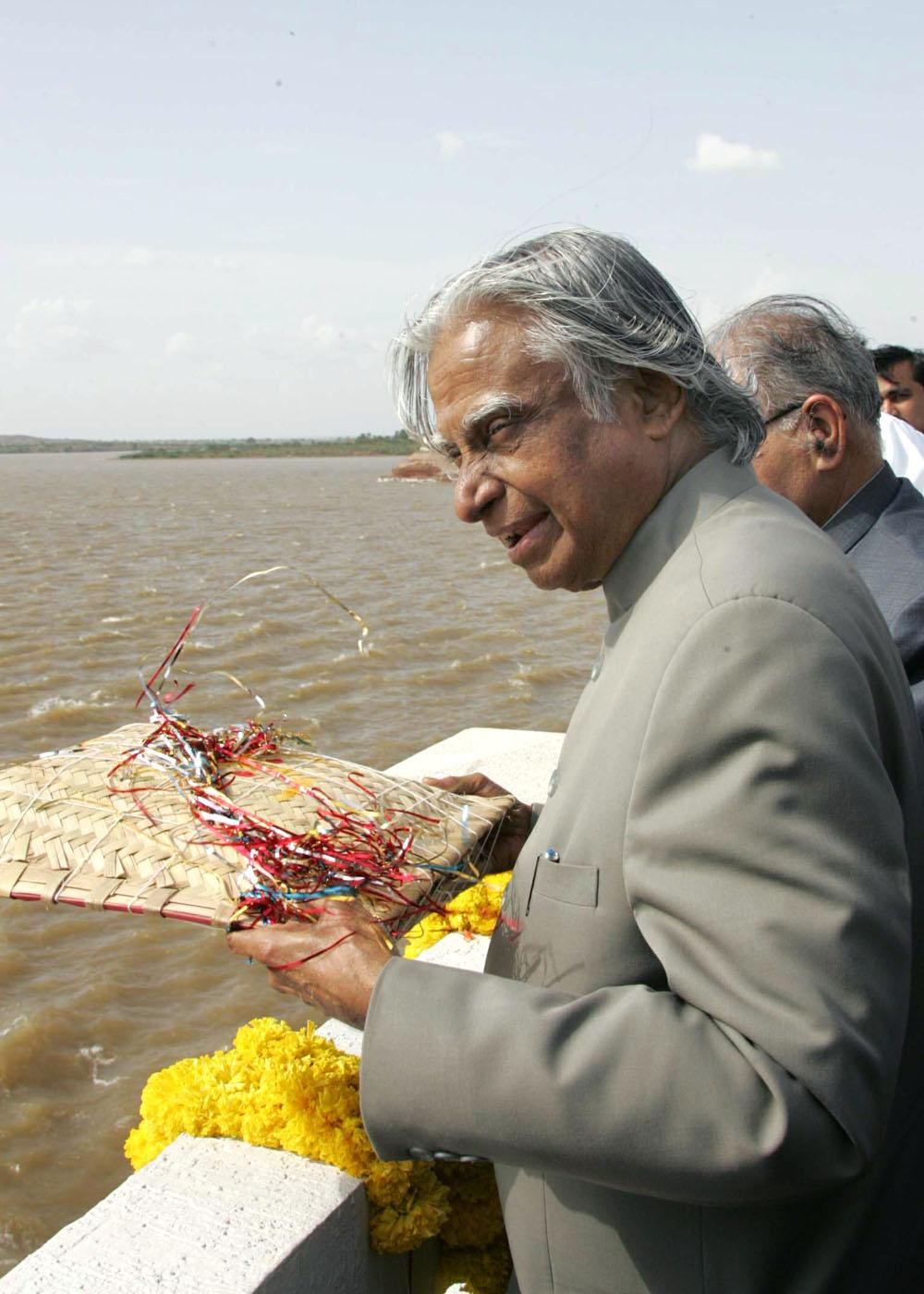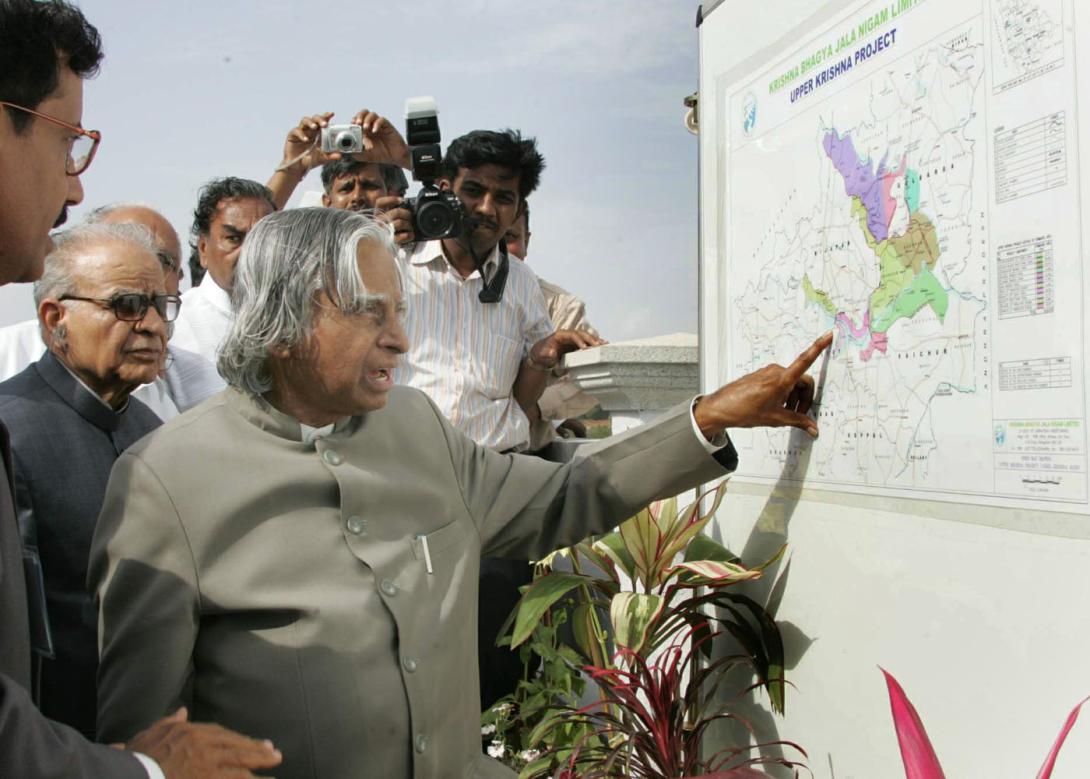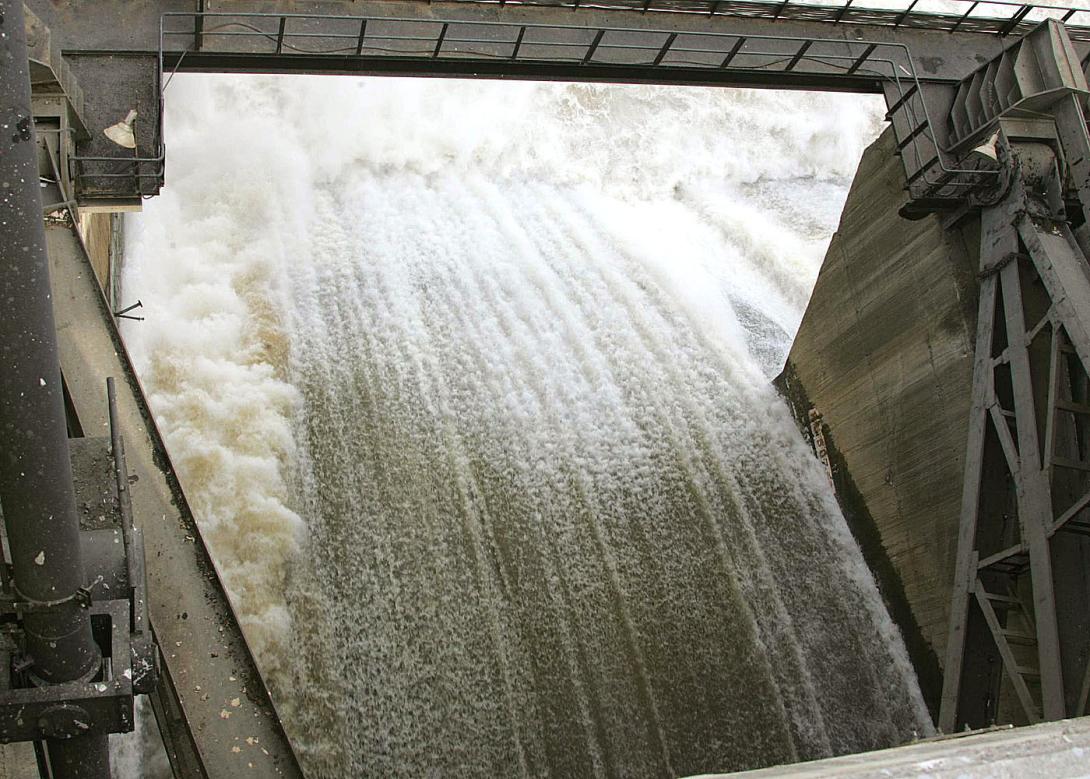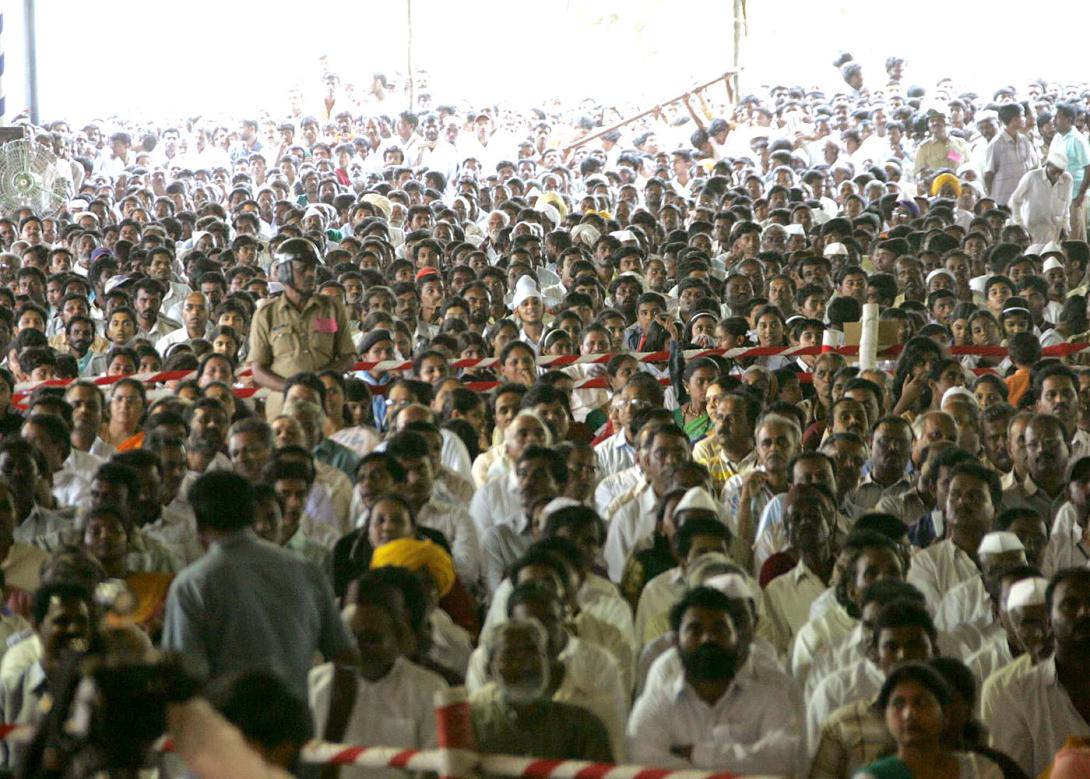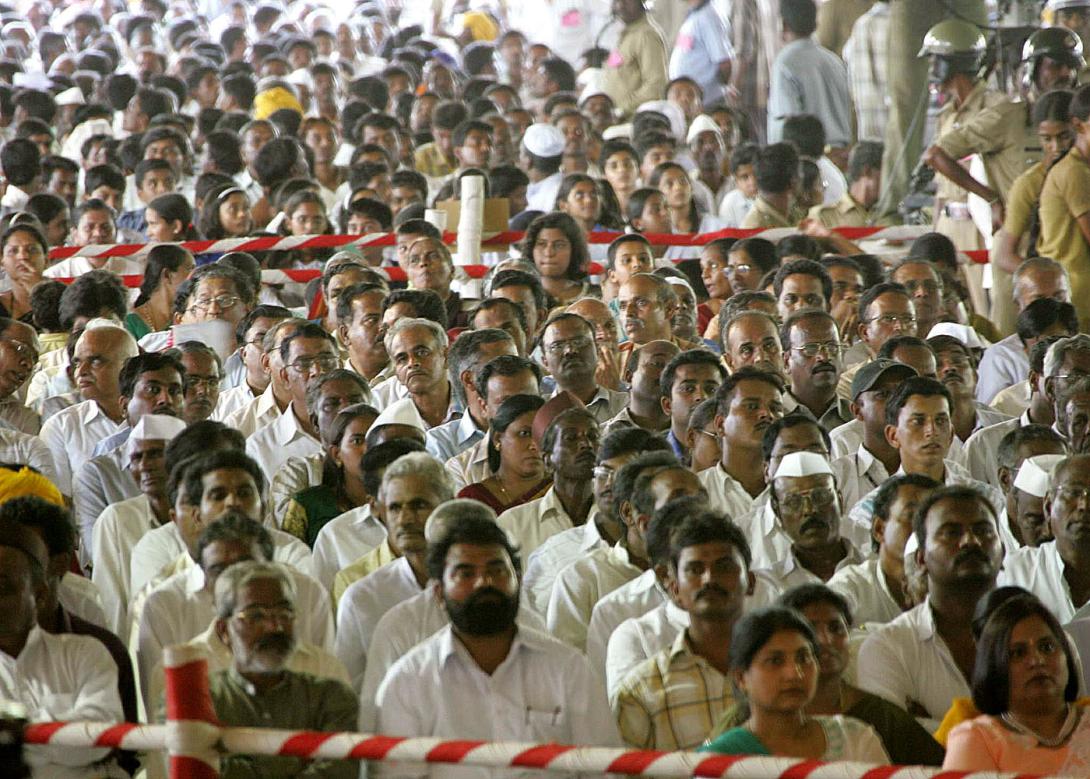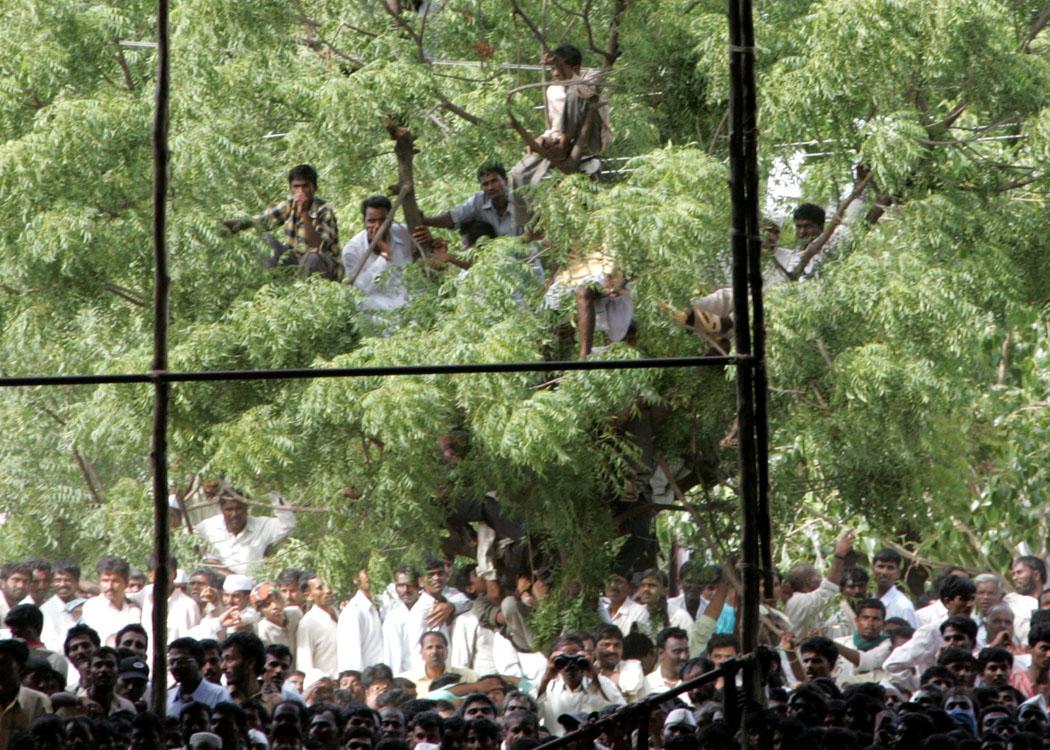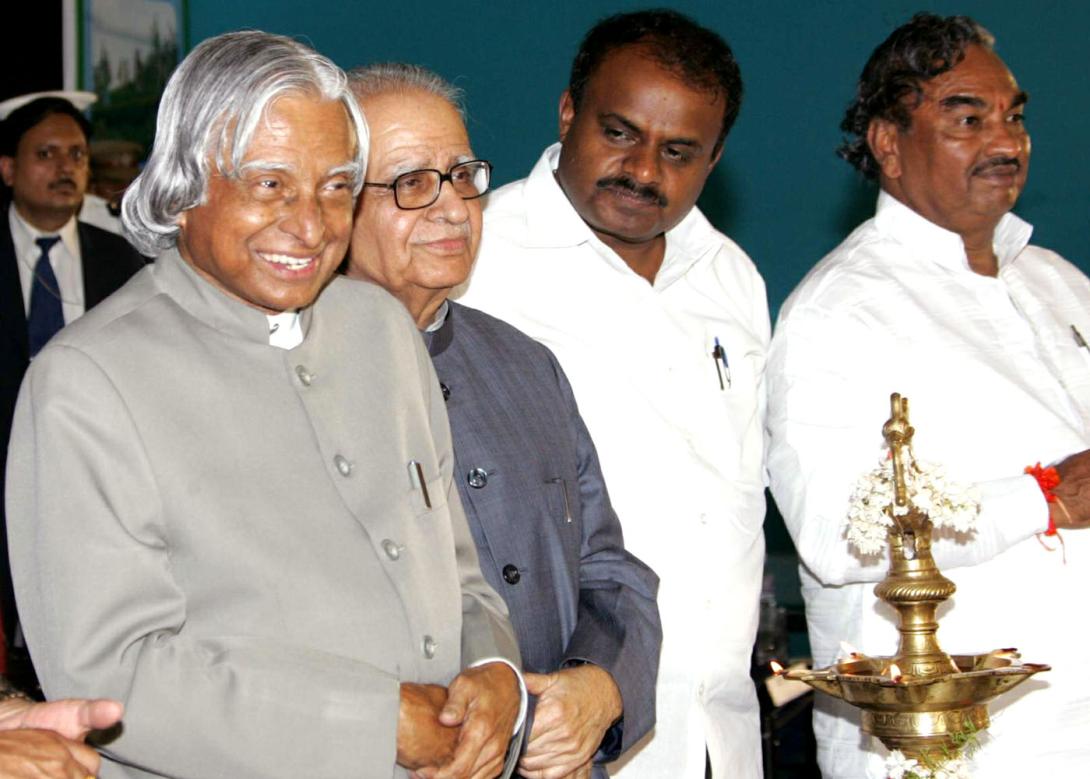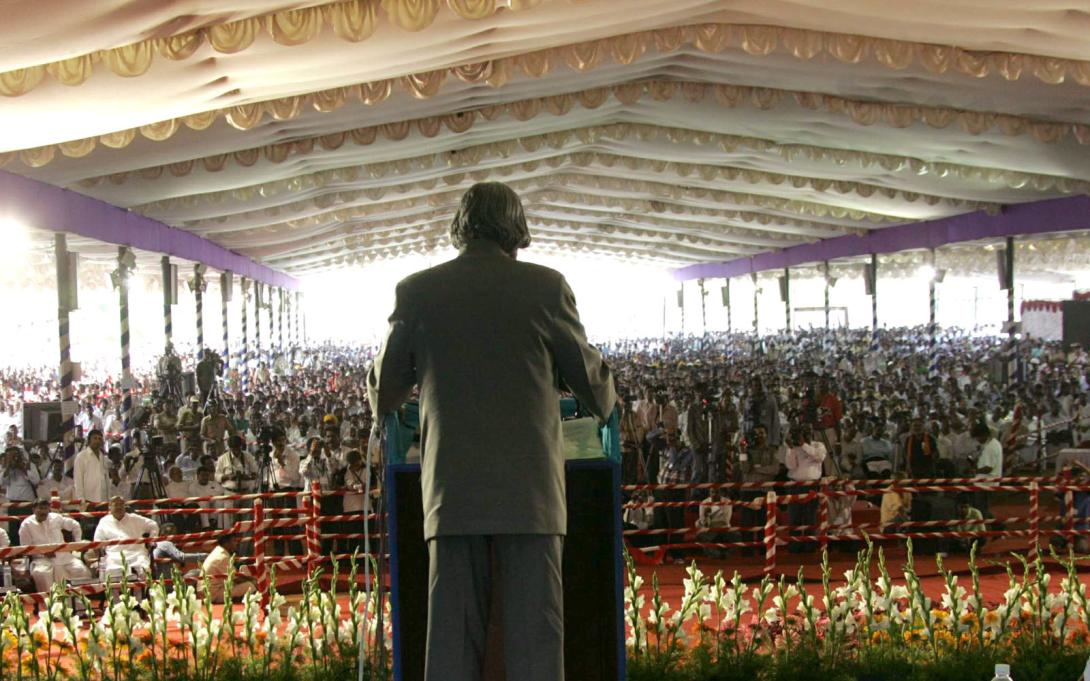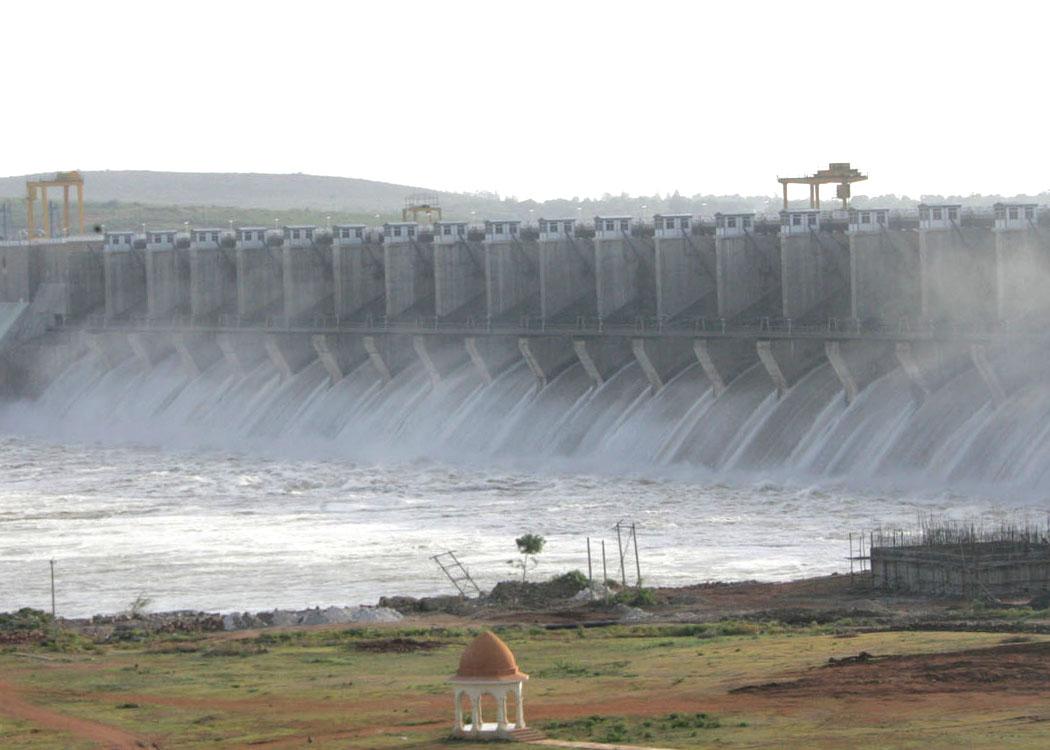Address During the Dedication of the Upper Krishna Project to the Nation, Almatti
Almatti, Karnataka : 21-08-2006
Integrated water mission
"Time is the essence of development"
I am delighted to participate in the dedication of the Upper Krishna Project to the Nation. I greet the Government of Karnataka and dignitaries participating in this function. In realizing the dam from design to operationalization, thousands of engineers and staff would have worked for many, many years. Let us be all thankful to them. I was thinking what thoughts I can share with the members who have come to attend this dedication function. I would like to discuss on the topic "Integrated Water Mission".
Almatti Dam: Focus
Upper Krishna Project under Krishna basin in Karnataka is a multi-purpose project, which can benefit the drought-affected area of North Karnataka. The project is expected to provide irrigation to over six lakh hectares and generate power to the extent of 290 MWs. Though, the two dams at Narayanpur and Almatti have been completed, many canals are yet to be completed. Early completion of these works is essential for enabling full utilization of the water by the farmers. I find that the project has taken nearly 43 years after its conceptualization. I would like to bring out an interesting fact about the gain of the project if it had been completed in time. The gain would have been around Rs. 25,000 Cr. from irrigation and Rs. 8000 Cr. from power generation to the Nation during this period. This brings out the need for timely completion of infrastructural projects through a mission mode operation.
Review of Management system
The decision making process in the execution of major programmes looks highly complex, because State Government, Central Government, Environmental ministries and sanctioning authorities are all involved. I am suggesting a task team formation with members drawn from centre and states to identify 10 successful Dam construction, rehabilitation and utilization programmes. Also the same team should study 10 programmes which have taken long duration for completion, because of the decision making process delays and the consequent costs escalation. The experience of these 20 programmes should become the basis for the Planning Commission and the ministries concerned to design a mechanism on how to execute such programmes in time within the specified cost. It is essential to accord highest priority for such social development projects so that the benefits of the project reach the farmers at the earliest.
Punjab Experience in reviving the waterways
Recently, I was in Punjab. There, I visited Sultanpur Lodhi and saw the marvelous development which has taken place on the river Kali Bein. I was delighted to see the rejuvenated Kali Bein, the place where Gurunanak Devji is said to have received enlightenment. Over the years this rivulet has turned into weed choked drain. Now, river is clean due to the efforts of Baba Balbir Singh Seechewal and his team. From the discussions, I understood that he organized people?s participation in stopping the massive flow of sewage into the Bein and cleaned 160 km long polluted and choked rivulet within the last five years by deploying on an average 3000 kar sevak (volunteer pilgrims) per day. Today one can feel the flow of fresh water in this rivulet released from the Tarkina Barrage by the government. The revival of the rivulet has recharged the water table as the hand pumps that had become dry for the past 4 decades are now pumping out water. Also, I saw speed boats running on the river. The 3 kms stretch which I physically saw was a beautiful site to watch with nice bathing ghats, tree orchards on the bank of the river and well laid out roads parallel to the river. The Government of Punjab has now sanctioned Rs. 60 Cr. for supporting the residual activities of this massive programme particularly the treatment of effluents coming out from factories which have so far been dumped into the Kali Bein River. I am sure there would be similar leaders like Baba Balbir Singh Seechewal in Karnataka who can provide the leadership for the water mission in this region and make a difference to the life of the people in this region.
Water mission
Now I would like to discuss some aspects of the water mission with you.
What is the total requirement of water for our nation for drinking purposes, sanitation, irrigation and other industrial uses and what the nation gets through seasonal inputs (rain and melting of snow)?
1. One third of our population is affected by flood or drought every year.
2. Per capita availability of water varies from 10 kilo litre to 50 kilo litre for different seasons and regions.
3. What are the optimal ways of meeting the minimum needs of water for the entire population, assuming a particular population growth rate for the country. We should remember that by 2020 we have to produce approx. 360 million tons of grain and the water requirement will also go up due to population increase.
With this ambience in mind, let us now study the water balance.
Water Balance
India gets approximately 4000 Billion Cubic Meters (BCM) of water every year from all natural sources. Out of this 700 BCM are lost in evaporation and another 700 BCM are lost during the flow on ground. Also, the large part of water namely 1500 BCM flows into the sea due to floods. Thus, the remaining available water is only 1100 BCM. Out of this ground water recharge accounts for 430 BCM per year and the present utilized surface water is 370 BCM. The balance unutilized water which can be harnessed is only 300 BCM.
Flood and Drought Situation
I was studying the frequent occurrence of flood and drought. Flood normally affects, 8 major river valleys spread over 40 million hectares of area in the entire country affecting nearly 260 million people. Similarly the drought affects 86 million people who are spread in 14 States covering a total of 116 districts. Wherefrom this flood comes? It comes from the 1500 BCM of water every year flowing during the monsoon season. If we have to prevent the damage due to the flood and reduce the severity of drought, we have to harness this 1500 BCM of water and distribute it to the drought affected areas. We can also partly store it in proper storage system so that it can be available during non-monsoon months. If we succeed in doing all these, we will not only save the loss arising out of the damage caused to the crops, properties and people by the flood to the extent of Rs. 2400 crores on an average per year, we will also save the recurring expenditure of Rs. 1200 crores incurred by the government as short term relief measure. The questions which arise are how to harness the flood water? And how to regulate the outflow of flood water so that it does not go into sea. Recent floods in Gujarat, Maharashtra, Karnataka, Andhra Pradesh, Orissa, Madhya Pradesh and Chhattisgarh has caused damage to life and property. It is time we collectively find a solution to such occurrences.
Harnessing the Water
Hence our aim should be to channelise the 1500 BCM of flood water, so that it can be made use of, for providing water to drought affected areas and make sufficient water available to the whole country during non-monsoon months through proper linking, storage and distribution. Our plans must consider that presently the sanitation facilities are not available in more than 50% of the dwelling units in the country. Planners must take into account this aspect while selecting schemes for harnessing and distributing the water for our growing population. We may have to align our interlinking of rivers project for meeting the growing water demands of the nation by having a hybrid scheme which can harness the additional 300 BCM per year and also a part of flood water of 1500 BCM.
Flood control
There is an urgent need to find long-term solution to control flood, store and utilize the surplus water during drought. In the Gangetic region, I would recommend construction of layered wells in the entry points of Kosi river. Normally the flood water has certain dynamic flow conditions. The layered wells assist gradual reduction in dynamic flow velocity after filling each storage well. The water thus stored will be useful during shortage period. Similar solution can be found for the north-eastern region. I recommend this scheme can be included in the Interlinking of rivers programme.
State wise linking of local river basins
During my address to the Andhra Pradesh Assembly, I had suggested that the Godavari water which flows into the sea to the extent of 2500 thousand million cubic feet (tmc) during floods and 750 tmc during normal conditions, may be diverted into the basin area for irrigation purposes through step dams, irrigation canals and water storage lakes and ponds. This will increase the irrigated area of the Godavari basin by over 30%. Andhra Pradesh government has agreed to implement this scheme. Also I was informed by the Chief Minister of Goa that the Government of Goa has interlinked Zuari river with Kalay river in Mandovi basin through installation of pumps and gravity flow. This has been done to ensure availability of drinking water in this region. I would suggest Karnataka to create a state-wide waterways at the height of approximately 300 feet above the mean sea level based on the existing contour connecting the major rivers of Karnataka. Preliminary estimate suggests that Karnataka can have a 400km long waterway, generating 2000 MW of power and providing additional irrigation for 2.3 million acres of land. At the inter-connection point there may be a need for balancing dams. This will enable equitable distribution of water and power across the State. Also, it will ensure the availability of adequate storage capacity during flood conditions. This water way can also be used as a water navigation system. This should form part of the State Planning. Overall planning of interlinking of rivers has to be integrated with the state water resource connectivity.
Conclusion
Recent experience of unexpected high monsoon activities in certain region and states in the country clearly reveals the need for forecasting particular cloud condition on how much amount of rain may come for the particular region, in a given period of time. Fortunately, the latest technology using polorimetric radar and certain software combination can give a solution for this problem. Also a network has to be created in certain states linking the rivers of the state and other water bodies like lakes and tanks. Underground silos may be thought of for storing excess water for future utilization. During the recent floods we witnessed the rivers of one state creating flood in different region cutting across multiple states. It means, nature wants our states in India to support each other unitedly through technology during difficult as well as good times. The river water tribunals have to take a proactive action using scientific tools, not only for allotting water during difficult times but also to organize storing the water during flood conditions. This will make the task of the river water tribunals easier during the period of shortage of water.
There is a need for a national mechanism for periodic inspection and certification of safety of all major dams using renowned national and international engineering and safety experts. This team should carry out a risk analysis and specify the repair and refurbishment required to make the dam fully safe. The specified task has to be carried out through an operational system. The national team should inspect after the execution of refurbishment tasks and certify before the dam is put into operation. During any earthquake in the region of the dam sites or severe flood conditions, special inspection, maintenance and certification have to be carried out by the same team.
Our planet will encounter in the next few decades severe shortage of water, if we are not careful in conserving and preserving precious water resources. In our country, we should have action oriented plans to foresee the problem and work on a mission mode before the water situation worsens. It is essential that we must have a water management mission that unfurls our vision for next two decades, integrating state level waterways, interlinking of rivers, water harvesting, water re-cycling, and desalination of sea water using solar energy in specific areas. I am happy that the Upper Krishna Project has taken adequate care to see that the rehabilitation action has been carried out in time to the satisfaction of all the affected people.
I dedicate the Upper Krishna Project to the Nation and wish success in the mission of providing quality water in adequate quantities for irrigation, drinking and clean electric power generation in Karnataka.
May God bless you.

